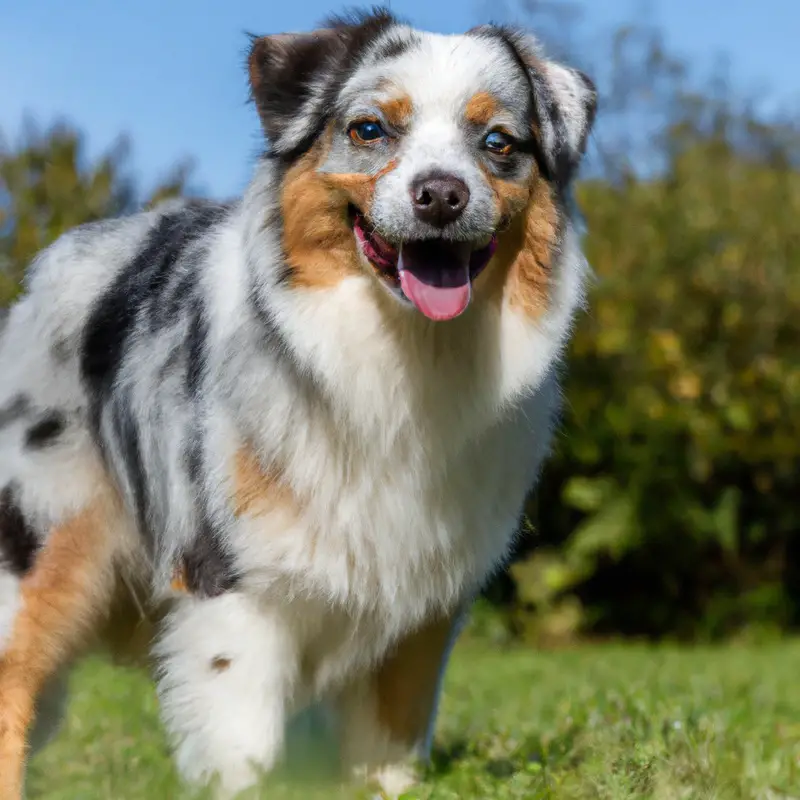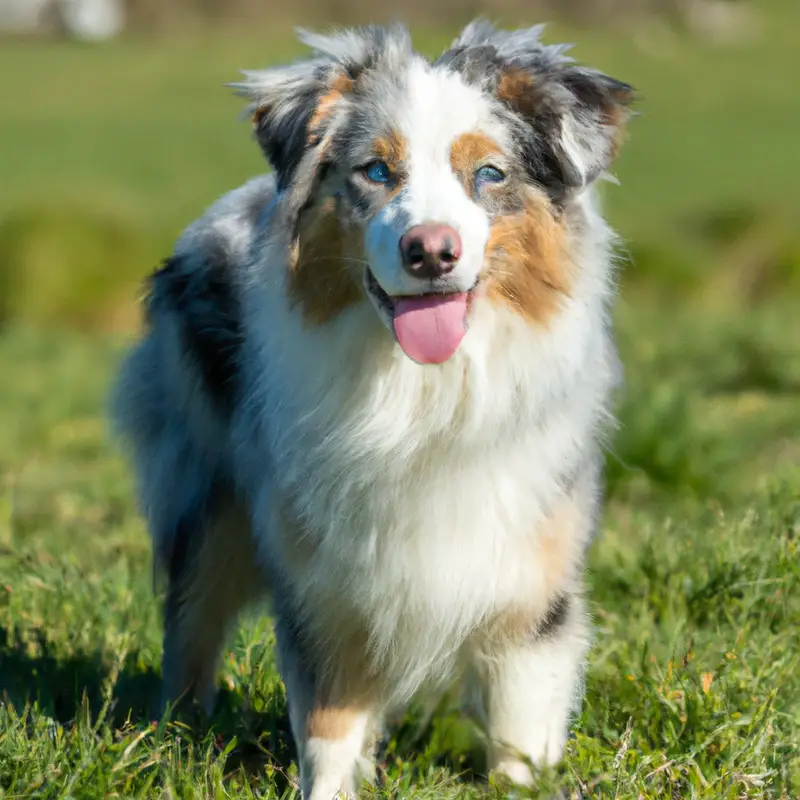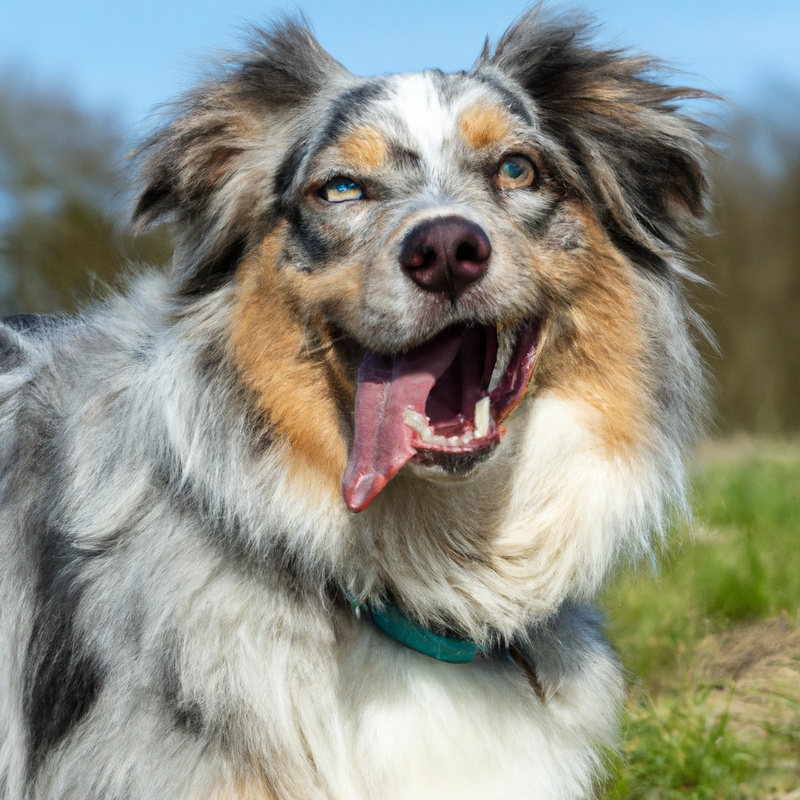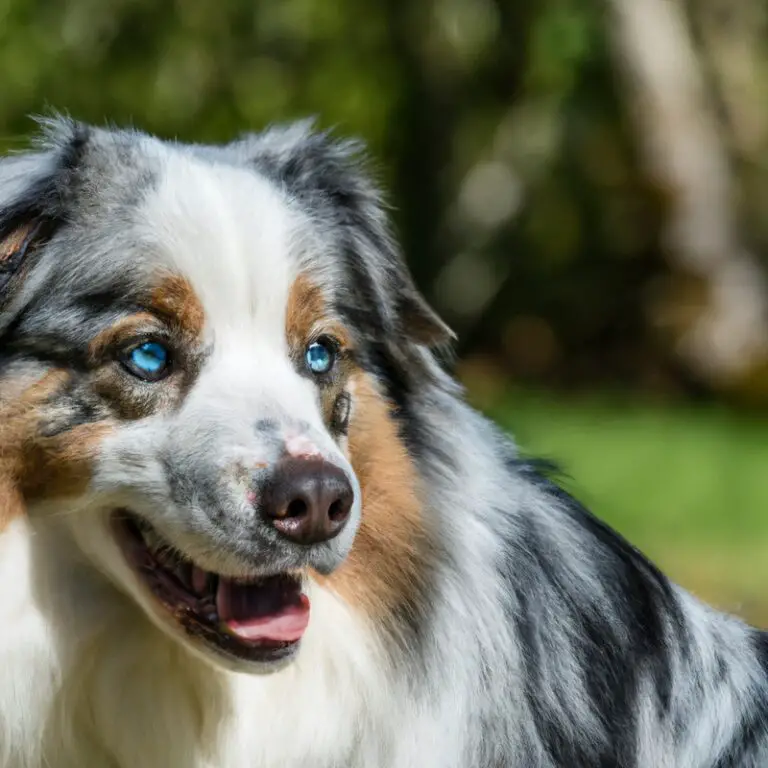What Are The Exercise Needs Of An Older Australian Shepherd?
Key Takeaways:
- Older Australian Shepherds require regular exercise to maintain their physical and mental well-being.
- The exercise needs of an older Australian Shepherd may vary depending on their health conditions and individual characteristics.
- Engaging in low-impact exercises, such as walking or swimming, can help older Australian Shepherds stay active and avoid joint discomfort.
- Monitoring their exercise levels and adapting routines to suit their changing needs is essential for keeping older Australian Shepherds healthy and happy.
As our beloved furry friends age, their exercise needs to change. So, how do we keep our older Australian Shepherds happy, healthy, and active?
That’s exactly what we’re here to explore.
In this article, we’ll delve into the exercise needs of older Australian Shepherds and how to tailor an exercise routine that suits their aging bodies. We’ll also uncover low-impact exercise options, ways to provide mental stimulation, and even discuss the importance of proper nutrition.
So, if you’re a proud owner of a senior Aussie, or just curious about their well-being, let’s jump right in!
| Exercise Needs | |
| Frequency | Daily |
| Duration | 30-60 minutes |
| Intensity | Moderate |
| Types of Exercise | Walking, jogging, light play, mental stimulation |
| Benefits | Physical health, mental stimulation, prevent boredom |
| Risks | Overexertion, joint pain, overheating |
| Considerations | Gradually increase exercise, adapt to individual needs |
Overview of Exercise Needs of Older Australian Shepherds
Understanding the Aging Process in Australian Shepherds
Understanding the aging process in Australian Shepherds is important to provide appropriate care for your furry friend. As Australian Shepherds grow older, they typically experience changes in their physical and cognitive abilities.
They may have reduced energy levels, slower metabolism, and be more prone to certain health conditions.
Additionally, their joints may become stiff, and their eyesight and hearing might decline. It’s crucial to be aware of these changes and adapt their exercise routine, nutrition, and overall care accordingly.
By understanding the aging process, you can ensure your Australian Shepherd’s well-being and help them age gracefully.
Importance of Exercise for Older Australian Shepherds
Exercise is extremely important for older Australian Shepherds. Regular physical activity helps maintain their overall health and well-being.
It keeps their muscles strong, joints flexible, and prevents weight gain, which can lead to other health problems.
Exercise also provides mental stimulation, which is crucial for their cognitive function and helps prevent boredom and destructive behaviors. Additionally, regular exercise helps improve cardiovascular health and reduces the risk of obesity, arthritis, and other age-related conditions.
Overall, exercise plays a vital role in keeping older Australian Shepherds happy, healthy, and engaged.
So, make sure to incorporate regular exercise into their daily routine.

Tailoring Exercise for Older Australian Shepherds
Types of Exercise Suitable for Aging Australian Shepherds
As Australian Shepherds age, their exercise needs change. It’s important to choose exercises that are suitable for their aging bodies.
Here are some types of exercise that are great for older Australian Shepherds:
- Gentle walks: Taking your aging Australian Shepherd for a walk is a low-impact exercise that still provides physical activity. It helps maintain muscle tone and keeps their joints limber.
- Mental stimulation: Keeping your older Australian Shepherd’s mind active is just as important as physical exercise. Engage their brains with puzzle toys or obedience training sessions. This not only keeps them entertained, but also helps prevent cognitive decline.
- Swimming: Swimming is a fantastic exercise option for older Australian Shepherds. It’s low-impact, making it easier on their joints, and provides a great cardiovascular workout. If your dog enjoys the water, this can be an excellent way to keep them in shape.
Remember, as your Australian Shepherd ages, it’s essential to monitor their energy levels and adjust their exercise routine accordingly. Be sure to consult with a veterinarian to determine the best exercise plan for your aging Australian Shepherd.
Factors to Consider When Designing an Exercise Routine
When designing an exercise routine for an older Australian Shepherd, there are a few factors to consider. Firstly, take into account your dog’s overall health and any specific medical conditions they have.
It’s important to tailor the exercise to their individual needs.
Secondly, consider their energy level and adaptability. While some older dogs may still have high levels of energy, others may require more rest.
Thirdly, think about the impact of exercise on their joints.
Low-impact activities like swimming or walking on softer surfaces can be beneficial. Lastly, don’t forget to incorporate mental stimulation through interactive toys or training exercises.
By considering these factors, you can create a well-rounded exercise routine that meets the needs of your older Australian Shepherd.

Recommended Frequency and Duration of Exercise for Older Australian Shepherds
When it comes to exercise for older Australian Shepherds, it’s important to find a balance that keeps them active without putting too much strain on their bodies. The recommended frequency of exercise for older Australian Shepherds is typically 2 to 3 times a day, with each session lasting around 10 to 15 minutes.
It’s essential to tailor the exercise routine to your dog’s individual needs, taking into consideration their energy levels, overall health, and any specific conditions they may have.
Remember to always consult with your veterinarian to ensure you’re providing the appropriate amount and type of exercise for your older Australian Shepherd.
Low-Impact Exercise Options for Older Australian Shepherds
Walking and Leash Training for Joint Health
Walking and leash training are excellent low-impact exercises that benefit the joint health of older Australian Shepherds. Regular walks help maintain joint mobility and prevent stiffness.
When leash training, it’s important to choose a leash and harness that provide comfort and support to minimize strain on the joints.
It’s also essential to start with shorter walks and gradually increase the duration and intensity. Walking on even, soft surfaces can further reduce the impact on joints.
Remember to monitor your dog’s comfort and limit exercise if any signs of discomfort or fatigue arise.

Swimming and Hydrotherapy for Conditioning and Rehabilitation
Swimming and hydrotherapy are excellent low-impact exercise options for older Australian Shepherds. In fact, they can be beneficial for both conditioning and rehabilitation purposes.
Swimming allows your older Australian Shepherd to engage in cardiovascular activity without putting excessive strain on their joints.
The buoyancy of water helps to support their body weight, reducing the stress on their bones and muscles. This can be particularly beneficial for senior dogs who may suffer from arthritis or other joint conditions.
Hydrotherapy, which involves specialized exercises in a controlled water environment, can also be highly beneficial for conditioning and rehabilitation.
It can help improve muscle tone and strength, increase circulation, and enhance range of motion. Both swimming and hydrotherapy can help your older Australian Shepherd maintain a healthy weight, as excessive weight can exacerbate joint issues.
Furthermore, these activities provide mental stimulation and can be a fun way for your furry friend to stay active and engaged.
When incorporating swimming or hydrotherapy into your older Australian Shepherd’s exercise routine, it’s important to start slowly and gradually increase the duration and intensity. It’s also crucial to monitor how your dog responds to these activities.
If you notice any signs of discomfort or fatigue, it may be necessary to adjust the exercise accordingly and consult with your veterinarian if needed.
Remember, swimming and hydrotherapy are wonderful options to keep your older Australian Shepherd active, fit, and happy. So, why not dive in and make a splash with your furry friend?
Mental Stimulation for Older Australian Shepherds
Interactive Toys and Puzzle Games
Interactive toys and puzzle games are a fantastic way to provide mental stimulation for older Australian Shepherds. These types of activities engage their minds and keep them entertained, which is especially important as they age.
Interactive toys, such as treat-dispensing toys or puzzle feeders, require dogs to problem solve and work for their food.
This not only provides mental stimulation but also helps to slow down their eating, which can be beneficial for digestion. Another great option is puzzle games.
These games typically involve hiding treats or toys in compartments or slots that the dog must figure out how to access.
This encourages their problem-solving skills and keeps their minds active. There are many different types of puzzle toys available, ranging from simple to complex, so you can find one that suits your dog’s abilities and preferences.
When choosing interactive toys and puzzle games for your older Australian Shepherd, it’s important to consider their individual needs and abilities.
Some dogs may require simpler toys that are easier to figure out, while others may thrive on more challenging puzzles. It’s also important to supervise your dog while they play with these toys to ensure they don’t become frustrated or overwhelmed.
Incorporating interactive toys and puzzle games into your older Australian Shepherd’s routine can provide mental stimulation, help prevent boredom, and keep their minds sharp.
By engaging their brains in a fun and challenging way, you can help keep your dog happy and healthy as they age.
Obedience Training and Trick Teachings for Cognitive Engagement
One great way to mentally stimulate older Australian Shepherds is through obedience training and trick teachings. This kind of training engages their minds, keeps them sharp, and strengthens the bond between you and your furry friend.
Obedience training is essential for older Australian Shepherds.
It helps reinforce their basic manners and ensures they are well-behaved in different situations. Teaching them commands like sit, stay, and come not only helps keep them safe but also provides mental stimulation as they master new skills.
Trick teachings are a fun and engaging way to challenge your older Australian Shepherd’s cognitive abilities.
Teaching them tricks like roll over, shake hands, or play dead can be mentally stimulating and keeps their brains active. Plus, it’s a great way to show off their skills to friends and family! When training your older Australian Shepherd, it’s important to be patient and consistent.
Reward-based training methods work best, using treats or positive reinforcement to encourage desired behaviors.
Break down complex tricks into smaller steps, gradually increasing difficulty as they show progress. Remember to keep training sessions short and fun.
Older Australian Shepherds may not have the same energy levels as when they were younger, so shorter, frequent sessions are more effective than long, exhaustive ones.
By incorporating obedience training and trick teachings into your older Australian Shepherd’s routine, you are providing them with mental stimulation and keeping their minds sharp. Plus, it’s a great way to bond and have fun together!
Monitoring and Adjusting Exercise Levels for Senior Australian Shepherds
Signs of Overexertion or Fatigue in Older Australian Shepherds
As Australian Shepherds age, it’s important to be aware of signs of overexertion or fatigue during exercise. Here are some key signs to watch out for in older Australian Shepherds:
- Excessive Panting: If your senior Australian Shepherd is panting excessively during or after exercise, it may indicate that they are pushing themselves too hard.
- Slowed Movement: If you notice that your dog is moving more slowly or struggling to keep up with their usual exercise routine, it could be a sign of fatigue.
- Limping or Lameness: Any limping or lameness during or after exercise could indicate joint or muscle strain, and it’s important to take it easy to prevent further injury.
- Excessive Restlessness: While it’s normal for dogs to be tired after exercise, if your older Australian Shepherd seems excessively restless or unable to settle down, it may be a sign of overexertion.
- Decreased Appetite or Thirst: Lack of interest in food or water after exercise could be a sign of exhaustion or fatigue.
If you observe any of these signs in your older Australian Shepherd, it’s important to adjust their exercise routine accordingly. Give them more rest periods, shorten the duration of exercise, or try low-impact activities to reduce the strain on their joints and muscles.
Remember, every dog is different, so it’s essential to monitor your individual dog’s response to exercise and make adjustments as needed.
Consulting with your veterinarian can also provide valuable guidance on assessing your dog’s exercise needs and ensuring their well-being.
Consulting with a Veterinarian to Assess Exercise Needs
To ensure the exercise needs of older Australian Shepherds are met, it is essential to consult with a veterinarian. Veterinarians have the expertise and knowledge to assess the specific exercise requirements of your senior dog.
They will consider factors such as your dog’s age, overall health, any existing medical conditions, and their individual activity level.
During the consultation, the veterinarian will conduct a thorough examination to determine your dog’s current physical condition. They may perform tests to assess joint health, muscle tone, and cardiovascular function.
Based on their findings, they will provide guidance on the appropriate exercise routine for your senior Australian Shepherd.
The veterinarian may recommend modifications to the exercise routine to accommodate any age-related issues or health conditions. They may suggest low-impact exercises that are easier on the joints or shorter duration exercise sessions to prevent overexertion.
They might also provide advice on warming up and cooling down exercises to reduce the risk of injury.
It’s important to communicate openly with your veterinarian regarding your dog’s exercise habits and any concerns you may have. By working together, you can develop a tailored exercise plan that meets the needs of your older Australian Shepherd, ensuring they stay active and healthy while minimizing the risk of injury or overexertion.
Supporting Exercise with Proper Nutrition for Older Australian Shepherds
Essential Nutrients for Aging Australian Shepherds
As our Australian Shepherds age, it’s important to pay attention to their nutritional needs. Here are some essential nutrients to consider for aging Australian Shepherds:
- Protein: Adequate protein is essential for maintaining muscle mass and strength in older dogs. Look for dog food formulas with high-quality protein sources like chicken, beef, or fish.
- Omega-3 fatty acids: These healthy fats have anti-inflammatory properties and can support joint health in aging Australian Shepherds. Look for dog food that contains fish oil or flaxseed, which are natural sources of omega-3 fatty acids.
- Glucosamine and chondroitin: These compounds are beneficial for cartilage health and can help manage arthritis symptoms in older dogs. Look for dog food or supplements that contain glucosamine and chondroitin sulfate.
- Antioxidants: Antioxidants like vitamins C and E can help support your Australian Shepherd’s immune system as they age. Look for dog food formulas that include fruits and vegetables, which are rich in natural antioxidants.
- Fiber: As dogs age, they may experience digestive issues. Including a moderate amount of dietary fiber in their diet can promote healthy digestion and prevent constipation. Look for dog food formulas that contain sources of fiber like sweet potatoes or pumpkin.
Remember, it’s always important to consult with your veterinarian for personalized recommendations based on your Australian Shepherd’s specific needs. They can help you choose the right dog food and supplements to support their overall health and well-being as they age.
Choosing Senior-Specific Dog Food Formulas
Choosing senior-specific dog food formulas is essential for meeting the nutritional needs of older Australian Shepherds. These specially formulated foods are designed to support the overall health and well-being of aging dogs.
When selecting a senior-specific dog food, look for formulas that are specifically labeled for “senior” or “mature” dogs.
These formulas are typically lower in calories to support weight maintenance and contain higher levels of protein to support muscle health. They also often include joint-supporting ingredients like glucosamine and chondroitin to promote joint health and mobility.
Additionally, senior-specific dog foods should contain essential nutrients such as omega-3 fatty acids for healthy skin and coat, antioxidants for immune system support, and high-quality sources of carbohydrates for sustained energy.
It’s important to consult with your veterinarian before making any changes to your older Australian Shepherd’s diet. They can provide guidance on the specific nutritional needs of your dog based on their individual health and condition.
By choosing a senior-specific dog food formula, you can help ensure that your older Australian Shepherd receives the necessary nutrients to support their overall health and longevity.
Final Verdict
As an expert in the field, I have discussed the exercise needs of older Australian Shepherds. Aging Australian Shepherds require regular exercise to maintain their physical and mental well-being.
By understanding the aging process, tailoring exercise routines, incorporating low-impact options, providing mental stimulation, and monitoring their exercise levels, we can ensure that our senior Australian Shepherds stay healthy and happy.
It is also crucial to support their exercise with proper nutrition. By following these guidelines and consulting with a veterinarian, we can provide our older Australian Shepherds with the exercise they need to lead fulfilling lives.








